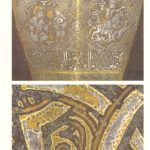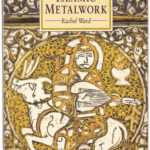Precio y stock a confirmar
Ed. British Museum Publications, 1993. Size 24,5 x 17,5 cm. With 39 colour and 60 black and white illustrations. Used excellent, 128 pages
Islamic metalwork is spread across many countries and more than thirteen hundred years, and a book of this size cannot attempt to cover every aspect of such a rich and varied tradition. Rather than narrow the geographical area covered, shave chosen to concentrate on the early period, from the beginning of Islam in the seventh century to the end of the fifteenth century. This is not intended, however, as a value judgement, for there are magnificent examples of Islamic metalwork produced after 1500.
 Most of rhe objects illustrated here are in the British Museum, which has one of the finest collections of medieval Islamic metalwork in the world. Much of fhe inlaid metalwork, including twenty-one objects from the collection of the Duc de Blacas (sold in Paris in 1866), was acquired between 1866 and 1896 under the direction of Sir Augustus Wollaston Franks (1826-97). He gave many objects himself and also encouraged a number of nineteenth-century collectors of Islamic metalwork, notably the antiquary John Henderson (d. 1878) and the architect and designer William Burges (d. 1881)il, to bequeath their collections to the British Museum. The collection has continued to grow during this century. Funds provided by Mr. P.T. Brooke Sewell (d. 1958), a merchant banker interested in oriental antiquities, have enabled many gaps to be filled, and much of the non-inlaid metalwork of the first centuries of Islam has been acquired through his generosity.
Most of rhe objects illustrated here are in the British Museum, which has one of the finest collections of medieval Islamic metalwork in the world. Much of fhe inlaid metalwork, including twenty-one objects from the collection of the Duc de Blacas (sold in Paris in 1866), was acquired between 1866 and 1896 under the direction of Sir Augustus Wollaston Franks (1826-97). He gave many objects himself and also encouraged a number of nineteenth-century collectors of Islamic metalwork, notably the antiquary John Henderson (d. 1878) and the architect and designer William Burges (d. 1881)il, to bequeath their collections to the British Museum. The collection has continued to grow during this century. Funds provided by Mr. P.T. Brooke Sewell (d. 1958), a merchant banker interested in oriental antiquities, have enabled many gaps to be filled, and much of the non-inlaid metalwork of the first centuries of Islam has been acquired through his generosity.
Inevitably gaps remain and a number of pivotal pieces, essential to a general introduction to the subject, are in other collections. Individuals and institutions who have kindly allowed me to illustrate objects in their collections are listed at the end of the book.
A book of this sort is founded on the work of others. Information and ideas have been drawn from a variety of sources and, in the case of translations of texts or poetry, often quoted verbatim. Some of the most important books and articles are listed as further reading on pages 124-5, but there are many other publications as well as unpublished lectures, personal communications and conversations.
CONTENTS
Preface
1- What is ilsamic metalwork?
2- Craftsmen, patrons, metals and techniques
3- Continuity and change: 600-900
4- The new style: 900-1100
5- The glittering surface: 1100-1300
6- Poetry and propaganda: 1300-1500
7- Map of the islamic world
Further reading
Illustration acknowledgements

